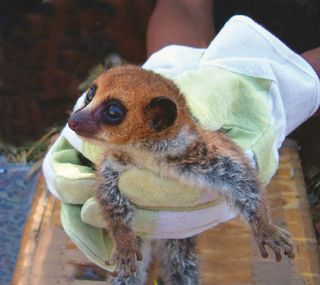
New Dwarf Lemur Species Found

In the forests of southern Madagascar, scientists have discovered a new type of dwarf lemur. But the previously unknown species may already be on its way to extinction; researchers' initial estimates suggest there could be fewer than 50 individuals left in the wild.
Lemurs are primates that are only found on Madagascar, a large island off the eastern coast of Africa known for its rich biodiversity and unique creatures. The newly described Lavasoa dwarf lemur (Cheirogaleus lavasoensis) has so far only been found in three isolated forests on the island, researchers say.
The animal likely eluded scientists for so long because of its secretive lifestyle. Dwarf lemurs are nocturnal, they spend much of their time high up in the forest canopy, and many have a period of dormancy, in which they hide in burrows or hollowed out trees for several months of the year in a bid to save energy.
Researchers were taking tissue samples from known species of dwarf lemurs when they made the find. Initially, they had grouped samples from the new species with samples from endangered furry-eared dwarf lemurs (Cheirogaleus crossleyi), but a genetic analysis proved that they were dealing with two distinct animals.
"Together with Malagasy scientists, we have been studying the diversity of lemurs for several years now," Andreas Hapke, a researcher at the Johannes Gutenberg University of Mainz in Germany, said in a statement. "It is only now that we were able to determine that some of the animals examined represent a previously unknown species."
The new species is described in the journal Molecular Phylogenetics and Evolution.
Follow Megan Gannon on Twitter and Google+. Follow OurAmazingPlanet @OAPlanet, Facebook and Google+. Original article on LiveScience's OurAmazingPlanet.
Sign up for the Live Science daily newsletter now
Get the world’s most fascinating discoveries delivered straight to your inbox.

Most Popular



